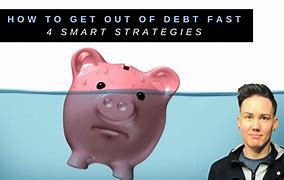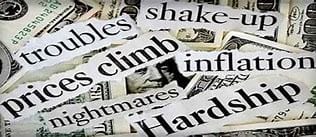How to Get Out of Debt Fast


Oke, sini aku bantu buat paragraf pembuka artikel SEO Friendly tentang ‘How to Get Out of Debt Fast’ dalam bahasa Inggris, dengan jumlah kata minimal 300 kata:
[Title] How to Get Out of Debt Fast: A Practical Guide
[Intro]
Are you drowning in debt? Do bills feel like a constant weight on your shoulders, preventing you from enjoying life? You’re not alone. Millions of people are struggling with debt, but the good news is you can climb out of it, & it’s not as daunting as it might seem.
This comprehensive guide will equip you with the tools & knowledge to tackle your debt head-on. We’ll dive deep into practical strategies , step-by-step techniques , & powerful mindset shifts to empower you to conquer your financial burdens.
From understanding the different types of debt to crafting a personalized debt-crushing plan, we’ll cover everything you need to get started. We’ll also explore ways to increase your income , optimize your spending, and stay motivated along the way.
Imagine this: a future where you are debt-free , with the freedom to pursue your dreams and finally achieve financial stability. This guide will help make that dream a reality.
Remember: You’re not alone. With determination & a solid strategy, you can overcome your debt & build a brighter financial future for yourself.
Let’s get started!
[Selanjutnya isi artikel dengan membahas beberapa strategi efektif seperti “Snowball Method” , “Avalanche Method” , “Debt Consolidation” , & cara mencari pendapatan tambahan]
Gimana , udah lebih friendly & SEO Friendly? & siap untuk membuat artikel SEO juara? 🙌
How to Get Out of Debt Fast: A Comprehensive Guide to Debt Relief
Feeling overwhelmed by debt? You’re not alone. Millions of people struggle with debt, but the good news is that it’s possible to get out of debt and regain control of your finances. This comprehensive guide will provide you with the tools and strategies you need to tackle your debt head-on.
Understanding Debt and Its Impact
What is debt?
Debt is simply money you owe to another person or entity. It can be a loan, a credit card balance, a student loan, or any other financial obligation.
Types of debt:
- Credit card debt: This is often the most expensive type of debt, with high interest rates and fees.
- Student loan debt: A significant financial burden for many, student loans can come with both fixed and variable interest rates.
- Personal loans: These loans can be used for various purposes, like home improvements or medical expenses. Interest rates can vary depending on your creditworthiness.
- Medical debt: This type of debt can arise from unexpected medical bills, often leaving individuals with substantial financial stress.
- Auto loans: Financing a car is a common form of debt, with interest rates typically lower than credit cards but still a significant expense.
- Mortgage debt: This is the largest debt for most homeowners and can be a long-term commitment, but it’s also an investment in your future.
The consequences of debt:
Debt can have a significant impact on your life, both financially and emotionally. Here are some common consequences:
- Stress and anxiety: Feeling burdened by debt can lead to stress, anxiety, and even depression.
- Financial instability: Debt can make it difficult to save money, invest, or plan for the future.
- Damaged credit score: Failing to make payments on time can negatively impact your credit score, making it harder to qualify for loans and credit cards.
- Limited opportunities: Debt can prevent you from taking advantage of important life opportunities, such as buying a home or starting a business.
- Legal issues: In some cases, failing to repay your debts can result in legal action, like wage garnishment or even bankruptcy.
Assessing Your Debt Situation
The first step to getting out of debt is understanding your current situation. This involves tracking your debt, analyzing your spending habits, and determining your debt-to-income ratio (DTI).
Tracking your debt:
- Creating a debt inventory: List all your debts, including the amount owed, interest rate, minimum payment, and due date.
- Using budgeting tools: Use a budgeting app or spreadsheet to track your income and expenses. This will help you identify areas where you can cut back on spending.
- Analyzing spending habits: Review your spending patterns to identify areas where you can reduce unnecessary expenses.
- Determining debt-to-income ratio (DTI): Calculate your DTI by dividing your monthly debt payments by your gross monthly income. A high DTI can make it more challenging to manage debt.
Understanding your credit score and its impact:
Your credit score is a three-digit number that reflects your creditworthiness. Lenders use it to determine your interest rates and loan terms. It’s important to understand your credit score and how it affects your ability to manage debt.
Developing a Debt Reduction Strategy
Once you have a clear understanding of your debt situation, it’s time to develop a plan for getting out of debt. There are several different approaches you can take.
The Snowball Method:
- Paying off smallest debts first: Focus on paying off your smallest debt first, regardless of interest rate.
- Motivation and momentum: This method can be motivating, as you’ll experience quick wins and gain momentum.
- Potential for quick wins: Paying off smaller debts can provide a sense of accomplishment and boost your confidence.
The Avalanche Method:
- Focusing on highest interest rates: Pay off your debts with the highest interest rates first.
- Minimizing interest charges: This approach will save you money in the long run by reducing the amount of interest you pay.
- Long-term savings: While it may take longer to see results, the Avalanche Method can save you significant amounts of money over time.
Debt consolidation:
- Combining multiple debts into one loan: Consolidate your debts into a single loan with a lower interest rate.
- Lower interest rates and monthly payments: This can result in lower monthly payments, freeing up more cash flow to pay down your debt.
- Potential for lower monthly payments: While the total amount owed may remain the same, you may have a lower monthly payment, making it easier to manage your debt.
Balance transfers:
- Moving credit card balances to a card with a 0% introductory APR: Transfer your credit card balances to a card that offers a 0% introductory Annual Percentage Rate (APR) for a specific period.
- Temporary relief from interest charges: This can provide temporary relief from interest charges, allowing you to focus on paying down the principal balance.
- Importance of transferring before the introductory period ends: Be sure to transfer your balance before the introductory period ends, or you’ll be subject to the card’s regular APR.
Negotiating with Creditors
If you’re struggling to make payments, you can try negotiating with your creditors.
- Understanding your rights as a borrower: Familiarize yourself with your rights as a borrower, including the Fair Debt Collection Practices Act (FDCPA).
- Communicating with creditors: Be polite and professional when communicating with creditors.
- Explaining your financial situation: Explain your financial situation and why you’re having difficulty making payments.
- Negotiating lower interest rates: Ask for a lower interest rate or a temporary payment reduction.
- Exploring payment plans: See if you can work out a payment plan that fits your budget.
Working with credit counseling agencies:
- Benefits of professional assistance: Credit counseling agencies can provide valuable support and guidance.
- Negotiating with creditors on your behalf: They can negotiate with creditors on your behalf, potentially securing better terms.
- Developing a personalized debt management plan: They can help you create a personalized debt management plan that meets your specific needs.
Making Extra Payments
Making extra payments on your debts can accelerate your debt reduction journey.
Finding extra money:
- Cutting unnecessary expenses: Identify areas where you can cut back on spending, such as dining out, entertainment, or subscriptions.
- Increasing income: Explore ways to increase your income, such as taking on a side hustle or asking for a raise at work.
- Selling unused items: Sell items you no longer use, such as clothing, electronics, or furniture.
Prioritizing debt payments:
- Allocating extra funds to debt reduction: Allocate any extra money you have towards paying down your debts.
- Using windfalls for debt payments: Use windfalls, like tax refunds or bonuses, to make extra payments on your debts.
- Automating payments: Set up automatic payments for your debts to ensure you’re always making on-time payments.
Seeking Professional Help
In some cases, you may need professional help to get out of debt.
When to consider debt consolidation loans:
- Evaluating potential benefits and risks: Consider the potential benefits and risks of debt consolidation loans before making a decision.
- Finding a reputable lender: Research reputable lenders with competitive interest rates and terms.
- Understanding loan terms: Carefully review the loan terms, including the interest rate, repayment period, and any fees.
Bankruptcy as a last resort:
- Types of bankruptcy: There are two main types of bankruptcy: Chapter 7 and Chapter 13.
- Consequences of filing for bankruptcy: Bankruptcy can have serious consequences, including damaging your credit score and limiting your financial options.
- Alternatives to bankruptcy: Explore all other options before considering bankruptcy.
Building a Strong Financial Foundation
Once you’re debt-free, it’s important to build a strong financial foundation to prevent future debt.
Budgeting and financial planning:
- Creating a realistic budget: Develop a realistic budget that tracks your income and expenses.
- Saving for emergencies: Establish an emergency fund to cover unexpected expenses.
- Planning for future financial goals: Set financial goals for the future, such as retirement, a down payment on a house, or a child’s education.
Maintaining good credit:
- Paying bills on time: Make all your payments on time to maintain a good credit score.
- Keeping credit utilization low: Keep your credit utilization ratio low by using only a small portion of your available credit.
- Monitoring credit reports: Review your credit reports regularly for any errors or inconsistencies.
Avoiding future debt:
- Making informed financial decisions: Think carefully before taking on new debt.
- Developing healthy spending habits: Create healthy spending habits that prevent overspending.
- Prioritizing savings: Make saving a priority to ensure you have a financial safety net.
Conclusion
Getting out of debt is a challenging but achievable goal. By understanding your debt situation, developing a strategic plan, and taking proactive steps, you can regain control of your finances and build a brighter future. Remember, seeking professional help and maintaining a positive mindset can make all the difference in your journey to debt freedom.


